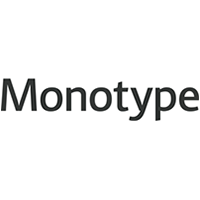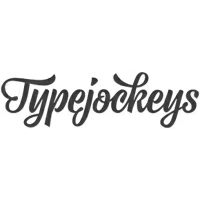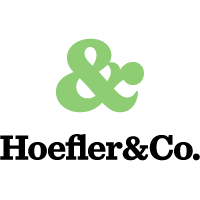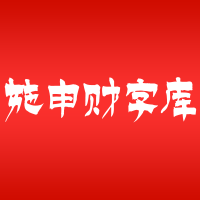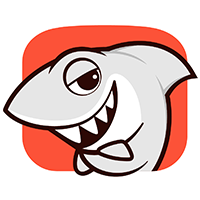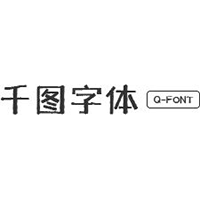TDC2 2010 – Type Systems

I'm a bit torn. On Twitter I announced I wasn't entirely happy with this year's TDC2 results. This was an underlying reason for asking everyone who entered the contest to send me their submissions. I needed context, to try to understand why some unusual choices were made – in my opinion at least. My remark on Twitter didn't go unnoticed, and several people asked me my "unedited" opinion about the winning entries. This is why after an extended leave I will once again don the mantle of Bald Condensed (does this make me sound like an avenging super hero? ; ). Unlike last year, I will not limit myself to simply providing background information for the typefaces in my TDC2 reports. Whenever I deem it appropriate/necessary I will give my personal opinion about the winning entries.
Honestly I feel a little anxious about this. I don't want to give the impression I am second-guessing the jury; that would be unfair. After all they had to evaluate a considerable amount of type designs – 176! – in very limited time, and they had to reach some kind of consensus for every single one of the selections. I on the other hand am in a luxury position. The selection has been made for me, and I have had ample time to get acquainted with the sixteen awarded typefaces. I was able to examine them from up close, in different environments. Being critical about certain designs doesn't mean I am criticising the jury.

Then of course there are the designers themselves. When I asked them to send me information and visual samples of their awarded typefaces they were all very forthcoming and quick to oblige. Some even provided me with test licenses so I could create sample settings for these posts. To give any of them an unfavourable review after they have been so friendly will almost certainly make me feel bad. It's just as if I use the information the type designers so trustingly provided me with against them. Yet how can I be taken seriously if I am not entirely truthful in my assessment of the typefaces? Fortunately last Friday serendipity struck. Dear Designer, You Suck, Khoi Vinh's one year old post on critical discourse in design was tweeted by DesignObserver. Reading this excellent article reminded me of one of the main lessons I learned at KASK, the Royal Academy of Fine Arts in Gent where I studied Applied Arts. When someone criticises your work, never take it personally. It's not about you, it's about one specific example of your artistic output. De gustibus et coloribus yada yada (I never learned any Latin; this is a pathetic attempt at sounding smarter than I actually am). And even if the criticism is about your work in general, you can still choose to either learn from it and use it to improve and grow, or simply dismiss it if you don't think it is justified. To put it differently – if you're in the design business (or any artistic occupation for that matter) and can't cope with criticism, you obviously chose the wrong career.
So, enough self-referential meta-posting. Let's quit this overlong introduction and look at the winners, starting with the Type Systems category. It is defined as follows in the Entry Call and Forms PDF:
Extensive groups of related typefaces featuring separate designs for text and display composition, or groups of related typefaces featuring designs belonging to different style categories, such as serif and sans-serif, serif and slab serif, and serif and semi-serif. Digital fonts in Multiple Master or in OpenType format often fall within this subcategory.
Two families were awarded in this category, one from a young designer fresh out of Reading and one from an experienced veteran who joined the Monotype Type Drawing Office 45 years ago.
Ingeborg
To say things are going well for the fledgling Typejockeys, the Austrian graphic and type design company based in Vienna, would be an understatement. Thomas Gabriel and Michael Hochleitner – third member Anna Fahrmaier is not a type designer – wowed everyone who received their gorgeous type poster at last year's TYPO Berlin. Since then Typejockeys have been piling up successes and accolades galore. Numerous features in magazines and newspapers later, Hochleitner's Ingeborg made at least two of this year's "Best of" lists, having been included in FontWerk's Die beste Schriften 2009 and FontShop's Top Type of 2009. The crowning achievement up to this point is without a doubt this Certificate of Excellence in Type Design.
Ingeborg is Michael Hochleitner's first text family. It was originally designed in 2007–2008 for the practical component of the MA Typeface Design program at the University of Reading. This contemporary Didone – characterised by vertical stress and high contrast – is rooted in classical models from the late eighteenth century, but was approached in a decidedly modern way. The family includes four text styles and five display styles, respectively Regular and Bold with italics, and Heavy and Fat with italics plus a Block weight. The text weights on the one hand are a little more reserved and functional, with somewhat sturdier serifs and hairlines to eliminate shimmer and increase legibility at smaller sizes. Using their own visual language the display variants on the other hand make an impact and grab the attention of the reader by applying a whole lot of ink on the paper. Although the text and the display weights are optimally designed for the specific functions they need to perform, they share the same origins ans structure, and work together in perfect harmony.
I think the appeal of Ingeborg lies in a clever mix of vintage and contemporary. Michael managed to interpret the classic-looking Didone model with a very modern sensibility. It is the new Fiat Cinquecento, the Volkswagen New Beetle, the Chrysler PT Cruiser of typography – and I mean this in the most positive of ways. Its general appearance is comfortingly familiar, yet numerous details remind us that this is a design of the now – the typical lowercase "g" with open bowl and its alternate glyph with jaunty upwards ear, the wonky italic "y", the swooping tail on the uppercase "Q", the lowercase "k" with its cheeky leg, and so on. To improve the setting numerous ligatures and alternate character shapes are included. The Block weight with solid close shade effect (thank you John Downer :) brings the whole concept of modern vintage home; the shaded variants are a surprising bonus. And I am happy to report it comes with delightful titling caps, and – I am going to get flamed for this by a number of type designer friends&nsbp;– a unicase version as well.
I like this style of reinvented retro quite a bit. The type design establishment may argue that it doesn't add anything truly substantial to the cannon of type, and they may be right. But as a type enthusiast I am happy with this joyous, colourful, and above all useful little family that is sure to add fun and pizzaz to any type collection.
As a bonus Michael sent me a bunch of sketches – or scribbles as he calls them – from the development of the typeface. Enjoy, then read on for my review of Ysobel.







Ysobel
The other awarded family in the Type System category is Ysobel. A collaborative design effort between Robin Nicholas, as lead designer and project director, Delve Withrington and Alice Savoie of Monotype Imaging, the project had the primary design goal of creating a typeface family for setting text in newspapers and periodicals. The result, however, is also ideal for any application that requires quick and easy assimilation of text.
According to Nicholas,
The idea for the design started when I was asked to develop a custom version of Century Schoolbook. I wanted to give the design a more contemporary feel, although the client ultimately decided to keep their typeface closer to the original. The project nevertheless gave me ideas for a new design. Since designing Nimrod, some 30 years ago, I had wanted to make a more modern typeface family for newspapers and magazines – this seemed the ideal candidate.
Ysobel (pronounced "Isabel") has the soft, inviting letter shapes of Century Schoolbook but contrasts these with more incised serifs and terminals. Its capitals are also narrower than those of Century Schoolbook, and care was taken to ensure that they harmonize perfectly with the lowercase. Ysobel's x-height is full-bodied without disrupting lowercase proportions. In addition, curved terminals, such as those in the "C," "c" and "e," were drawn more open as an aid to legibility and readability in text copy. Weight stress is near vertical, and hairlines are robust to ensure character fidelity in small point sizes.

Development began with the text version of the family, which has four weights, each with an italic companion. All weights feature lining and old style numerals, fractions, superiors and extended Latin language coverage. Small caps are also available in the Roman Regular design. Ysobel Display is a completely redrawn version of the typeface; it is narrower, and has a slightly smaller x-height, thinner hairlines and subtle design changes to improve its appearance when set at large sizes. The Display Italic received particular attention to make it ideal for setting headlines, subheads and short blocks of copy. Changes include a slightly greater italic angle and more cursive treatment of some letter shapes. Alternative styles of capital "J" and "Q," to provide variation, are available in all weights.
The complete Ysobel family is also available as a suite of OpenType® Pro fonts. These fonts, in addition to providing for the automatic insertion of ligatures and old style figures, also offer an extended character set supporting most Central European and many Eastern European languages.

I wasn't really impressed with the PDF found on the Monotype Imaging website. Fortunately Robin Nicholas was very kind to send me review copies of the fonts. This allowed me to play around with them and examine the character set. The only new thing I learned is that I find Ysobel has an underlying Times-flavour. I was hoping to discover why this family had received a Certificate of Excellence, yet in all honesty all I can say is "Meh". Mind you, Ysobel is a professional design, perfectly executed. Except for the lack of small caps it has everything a versatile type family needs. However it is quite uninspiring, and I have the impression I have already seen this, but done much better by outfits like The Font Bureau, Inc., Hoefler & Frere-Jones, Josh Darden, and so on. The design doesn't sing, and lacks that extra oomph to make it an obvious award candidate. If Ingeborg can be classified as "reinvented retro", I would call Ysobel merely "retro", because to my eyes it doesn't bring anything new to the table.
Comparing these two typefaces reminds me of the recording sessions I had with Rosa Luxe, the new band of former Troubleman guitarist Nick Jury which I recently joined. When Troubleman went into the studio to record our first album Penny Symphonies we had been rehearsing the songs extensively for several months, and due to our very restricted budget recording took about two years. As a result every song was polished over and over again until we were perfectly happy with them. This was in stark contrast with how we went about for the Rosa Luxe album. Barely a couple of weeks before the actual recordings I received a CDR with sketches of the songs, and eventually I entered the studio without even having rehearsed any of them. I was given considerable freedom and the possibility to create the rhythm tracks on the fly – most of them are second or third takes with minor corrections in ProTools. And you can hear it – however much I love Penny Symphonies, there's something about the Rosa Luxe album that's vibrant and exhilarating.
Michael Hochleitner may lack the 45 years of experience in type design, but you can taste the freshness of Ingeborg, and the eagerness and enthusiasm of its designer is almost palpable. Ysobel is a perfectly crafted, extensive type system, but honestly I miss the excitement.
-
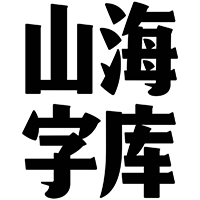 ShanhaiFonts
ShanhaiFonts
Brand:山海字库
Area:China

-
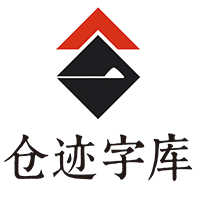 Cangji Fonts
Cangji Fonts
Brand: 仓迹字库
Area: China

-
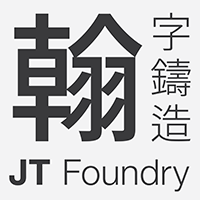 JT Foundry
JT Foundry
Brand: 翰字铸造
Area: Taiwan, China

-
 Handmadefont
Handmadefont
Brand:
Area: Estonia

-
·千图字体
-
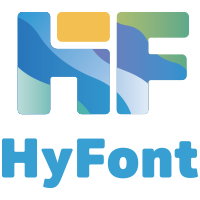 HyFont Studio
HyFont Studio
Brand: 新美字库
Area: China

- ·Antropofagia. Palimpsesto Selvagem
- ·He Invented a Font to Help People With Dyslexia Read
- ·XUID Arrays: One Less Thing To Worry About
- ·Cocoa Marsh Instant Fudge Candy Mix packaging
- ·"Fantastic!" ad for Captain Fantastic & the Brown Dirt Cowboy by Elton John & Bernie Taupin
- ·47 free tattoo fonts for your body art
- ·How to Read a Painting by Patrick de Rynck
- ·Linotype Ad: "Linotype vs. Intertype"
- ·Jim Nutt: Coming Into Character at Museum of Contemporary Art Chicago
- ·Why Apple Abandoned the World's Most Beloved Typeface?
















